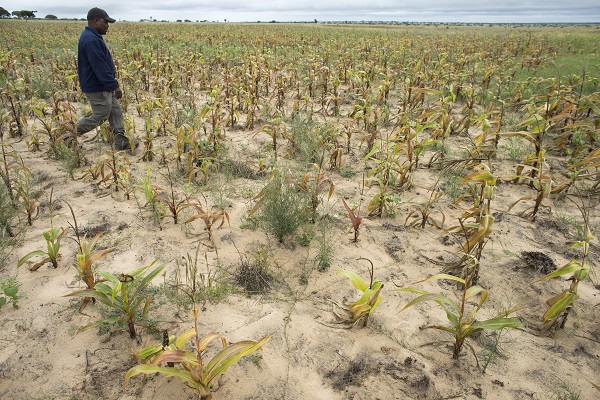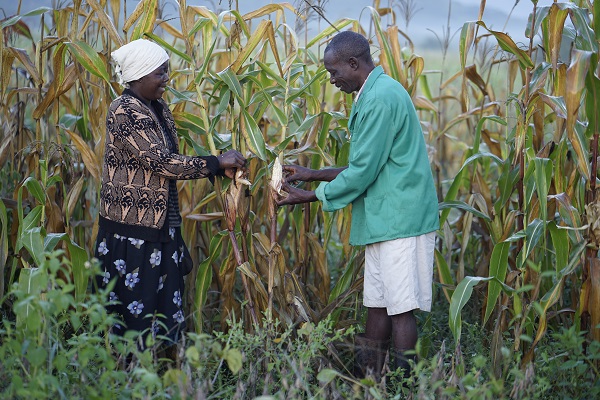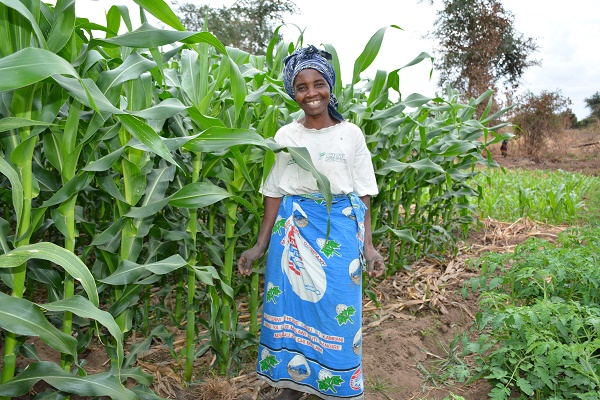HARARE, Zimbabwe (CIMMYT) – “Rain patterns have changed tremendously,” says Dyless Kasawala, a smallholder farmer in Kasungu district, Malawi. “It’s different from the old days when you would be sure of a great harvest after the rains.”
For more than three decades now, life has not been easy for Kasawala and thousands of other smallholder farmers in this harsh, dry environment. Kasawala’s story is common throughout eastern and southern Africa. Observations by smallholder farmers confirm scientific evidence that shows climate change is occurring at an alarming rate, and could leave 50 million people in the region hungry by 2050.

Sub-Saharan Africa must become resilient to climate change effects like variable and severe drought and rainfall to ensure future food security. Practicing sustainable farming techniques can help small-scale farmers adapt to these challenges.
Across the world, more farmers are beginning to practice sustainable intensification (SI), which offers the potential to simultaneously adapt farming systems to climate change, sustainably manage land, soil, nutrient and water resources, improve food and nutrition security, and ultimately reduce rural poverty.
In practice, SI involves such conservation agriculture (CA) practices as minimal soil disturbance, permanent soil cover and the use of crop rotation to simultaneously maintain and boost yields, increase profits and protect the environment. It contributes to improved soil function and quality, which can improve resilience to climate variability. The cropping systems CIMMYT promotes can be labelled as climate-resilient, according to the U.N. Intergovernmental Panel on Climate Change.

“We received little rain this year, but we’ll still have enough food,” says Kasawala, who is participating in a project led by the International Maize and Wheat Improvement Center (CIMMYT), which aims to increase farm-level food security and productivity through SI.
Kasawala was one of the first farmers to practice sustainable intensification in her district in 2010. She has managed to improve soil fertility in her fields, increase her maize yield and improve her household food security.
“Farmers have a number of technological options, but ultimately they have to make informed decisions on which technologies to adopt,” said Eric Craswell, co-chair of CIMMYT’s Sustainable Intensification of Maize-Legume Cropping Systems for Food Security in Eastern and Southern Africa (SIMLESA) project steering committee. Such farmers as Kasawala who practice CA through SIMLESA participate in on-farm trials, which compare CA to conventional farming practices, test different levels of herbicide use and maize-legume crop rotations.

According to SIMLESA’s project leader Mulugetta Mekuria, there is evidence that shows new drought-tolerant maize varieties when coupled with SI bring even greater benefits to farmers. For example, combining elite drought-tolerant maize with direct seeding systems can improve the performance of maize by more than 80 percent. Now, nearly 650 maize and legume varieties, approved by farmers and selected by over 40 local seed companies, are being commercially distributed in the five SIMLESA countries (Ethiopia, Kenya, Malawi, Mozambique and Tanzania).
Zero tillage – a CA practice that directly sows seeds into unplowed soil and the residues of previous crops – has helped farmers cut planting time in half, allowing them to engage in other economic activities.
“Sustainable intensification is the only option to feed the extra two billion people by 2050, when resources are limited,” said John Dixon, principal advisor/research and program manager for the Australian Centre for International Agricultural Research (ACIAR)’s Cropping Systems and Economics program. ‘’Now is the time to scale-up by taking our research to farmers through extension, non-governmental organizations and farmers’ associations.”
Through 2018, CIMMYT will focus on bringing sustainable intensification to even more farmers throughout eastern and southern Africa. Collaborative work with farmers, extension agencies, non-governmental organizations, universities and agribusiness is expected to improve maize and legume productivity by 30 percent and reduce expected yield risk by 30 percent in about 650,000 rural households over a period of 10 years.
CIMMYT’s Sustainable Intensification of Maize-Legume Cropping Systems for Food Security in Eastern and Southern Africa (SIMLESA) project is funded by the Australian Centre for International Agricultural Research (ACIAR) with strong collaboration from National Agricultural Research Systems (NARS) and a wide range of private, university, public sector and non-governmental organizations. It aims at increasing farm-level food security and productivity in the context of climate risk and change.

 Capacity development
Capacity development 
